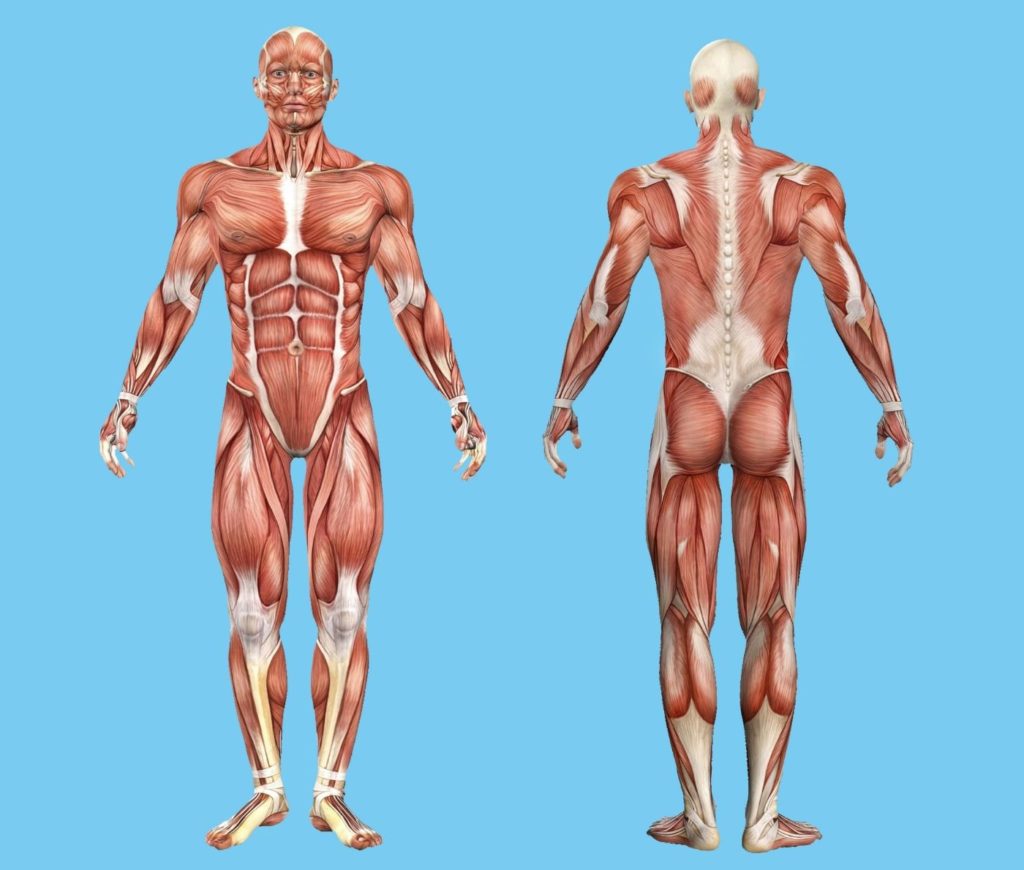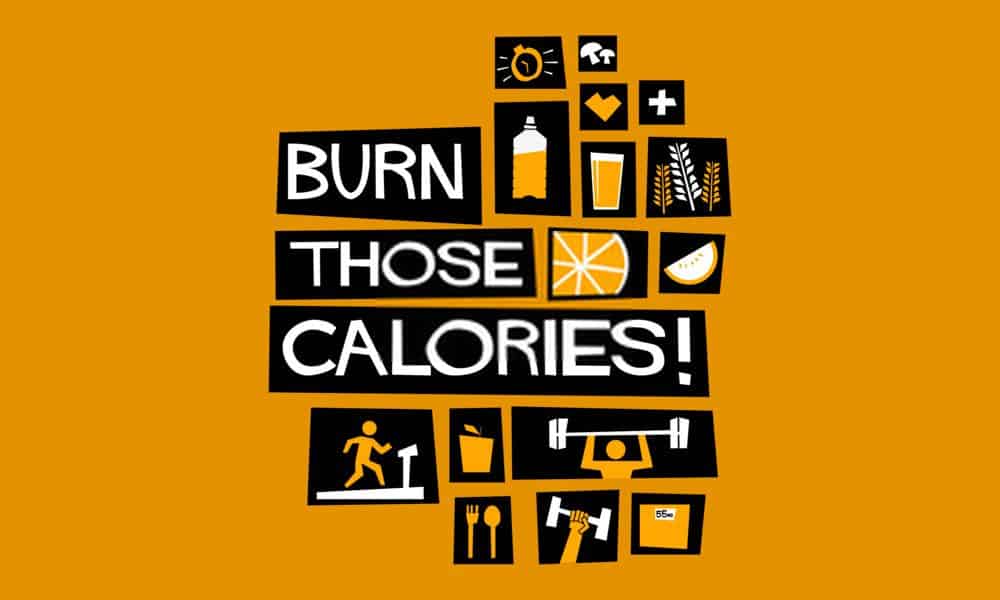Walking vs. running is one of the biggest debates among those interested in fitness, losing weight, and increasing physical capabilities.
Are you weighing up walking vs. running and wondering which is best for you? The simple answer is that walking and running are equally great ways to exercise, and doing either regularly will keep you fit and healthy. But, if you’re keen to know about the benefits of each, you’re in the right place.
If you’re currently switching from a non-exerciser to a regular runner or walker, you’ve probably wondered how walking and running differ. We’re here to help put your mind at ease with the differences between walking and running and how each type of exercise can benefit you.
Here’s how walking and running compare to the amount of calories burnt and the health benefits you’ll gain from getting active for just 30 minutes a day.
Use the Daily Calories Burned Calculation Tool below and set 30 minutes and your specific age and weight range from 350 to 800 calories depending on the running intensity (speed from 7 mph – 14 mph). Walking, on the other hand, ranges from 100 – 150 calories.
Try it yourself.
Are you wondering whether you should be running or walking?
Running is a great way to get fit but can also be costly and time-consuming if you’re serious about the sport. On the other hand, walking is an excellent choice for anyone who isn’t too keen on participating in sports; it doesn’t cost anything, and you can do it almost anywhere. You also need not worry about getting sweaty or having smelly gym clothes because all that sweating takes place outside.
Whether you’re looking at walking vs. running just to get fit, aiming for weight loss, combatting diabetes or heart disease, or want to feel better, the benefits of moving your body are endless. However, if you’re thinking about trying running and have never trained for a 5k or 10k event before, then even getting started can stop you in your tracks.
I only learned to run properly a few years ago, having been a walker all my life. It was years before I even considered looking into what benefits running could bring. I just wanted to be at the right fitness level to keep myself healthy, and running seemed like something only the super-fit did.
Things to consider and keep in mind when deciding which one to choose
Health benefits of walking
Walking is one of the best ways to improve your health. It’s cheap, easy, and requires no equipment. It’s perfect for weight loss and making you look great in front of others. Let’s take a look at some health benefits of walking.
Walking has been around for centuries. It’s easy, convenient, free, and can be done anywhere. Sadly, most of us have not taken advantage of this great form of exercise. There are many health benefits to walking, which is why you should start now!
Walking is one of the most relaxing and easy exercises you can do. It will help you relax and boost your health. People often think walking is an unscientific way to keep fit, but it has many health benefits.
Walking increases cardiovascular and pulmonary fitness.

As one of the most readily available forms of exercise, walking is often recommended as an excellent way to increase cardiovascular and pulmonary fitness.
Walking can do more for your health than you might think, including increasing your fitness and improving your heart and lung capacity.
Walking is a simple, low-impact exercise that anyone can do anywhere. It improves your health and mood and can easily add to your daily life.
Walking has many benefits, from improving fitness and preventing heart disease to lowering stress and relieving depression.
Walking reduces the risk of heart disease.

A study conducted by the University of Warwick found that walking for around an hour a day or more at a brisk pace can reduce the risk of heart disease and stroke by 25%. The study also found that walking combined with other activities such as running or cycling is even more beneficial.
Heart disease is the leading cause of death in the United States, and stroke is the third leading cause of death. Walking about 30 minutes daily can reduce the risk of these two conditions. A small study from the British Medical Journal has found that people who walk two hours a day, six days per week, have a 32% lower risk of cardiovascular disease. This is important because heart disease and stroke are the number one and four causes of death in the United States.
As a bonus, walking also reduces the risk of stroke by 40% and cuts your chance of dying prematurely in half. You don’t need to go far or walk for a long time. Just 10 minutes can make a big difference in the health of your heart.
If you want to lower your risk of heart disease and stroke, researchers from the Harvard School of Public Health recently found that you should consider walking more. At least 30 minutes every day. The study was done with 50,000 people, so it’s pretty reliable data. People who walked more were also 47% less likely to have a heart attack or stroke than those who did not walk regularly.
Regulates hypertension

According to a study published in Diabetes Spectrum, walking may improve hypertension and lipid control and manage musculoskeletal and neuropathic pain symptoms. Walking was found to reduce systolic blood pressure (the first number in a blood pressure reading) and increase high-density lipoprotein (“good” cholesterol). The study included 95 sedentary types 2 patients with total cholesterol levels between 180 and 220 mg/dL. Participants were randomly assigned to either a “walking group” or a “control group.” The walkers were given an individualized walking program based on their initial fitness level and their goal for exercise adherence.
One study found that even in people with high blood pressure, walking showed a significant decrease in blood pressure after a few weeks.
It improves balance and makes stronger bones
Walking is a great way to reduce your risk of developing osteoporosis. Studies show that people who walk for 30-45 minutes each day have less risk of breaking bones and developing conditions like arthritis. Walking for at least 30 minutes each day also improves balance and posture.
Walking helps to improve balance and make stronger bones. As we age, our bones start to weaken. This leads to increased fractures and falls, which are very common in the elderly.
It is a great way to help build your core muscles and avoid back pain.
Walking increases muscle strength and endurance.
Walking is gentle on muscles and joints compared to jogging or running which puts a strain on your body when done at a high intensity or distance.
You can use a simple running distance calculator to improve your results.
If you’re looking for a way to increase your muscle strength and endurance without having to do a rigorous workout, you should consider starting a consistent walking routine. When you walk, your whole body is in motion. It’s not just your legs doing the work–walking strengthens all your muscles, including your arms and abs.
After you’ve gone on a walking tour, do you want to keep doing it every day? Well, I hope so. I do. If you don’t know already, you should share the benefits of walking and run with everyone. People don’t go for walks because they don’t feel like they should since it seems too simple, or they are not motivated enough to go for a run, but these are why walking can benefit people.
Health benefits of running
Have you ever wondered what the health benefits of running are? Did you know that running can protect your brain from degeneration, increase your testosterone levels and grow new neurons in the hippocampus — an area of the brain associated with stress relief and improving mood?
Running has become a popular pastime amongst people who want to stay healthy. But some turn their nose to running and say walking is better.
Running has become a big business in the health and fitness world. As I write this, thousands of news articles are talking about how “running is my new drug,” men running shirtless to attract women and the latest scientific research on how running can take years off our life.
Running improves physical and mental health

It’s a word that can send shivers down the spine of many people who don’t enjoy it. Running is an excellent way to improve your physical and mental health, but with the massive benefits reaped from just running 1-2 times a week for at least 30 minutes, how many excuses do you need to put on your trainers?
Running affects your physical and mental health in several ways. You need to be conscious of your body and running form when you run. You have to listen to the signals your body sends to you, such as leg pain or shortness of breath. If you ignore these warning signs, you might get injured, leading to a loss in training days and weeks. Running also brings many psychological benefits such as improving sleep quality, positive mood effects, decreased anxiety and stress levels, and increased self-esteem.
Running can also boost your mental health by promoting self-esteem, reducing depression, and boosting the brain’s level of serotonin. It has also been shown to decrease feelings of hostility and aggression.
Running strengthens muscles

As we all know, our muscles are made of proteins. Muscles and your body regenerate with the help of protein. They also can repair themselves. Therefore, when you run, the protein is broken down into amino acids, which turn into carbohydrates and oxygen. The muscles in your body need these nutrients to repair themselves.
Although runners are often told that it takes years to build the necessary muscle and start seeing any benefits, running still offers many benefits to muscles, joints, and even bones. One of the most significant advantages of running is that it strengthens the muscles in the lower body. This is because runners use many lower body muscles, especially on uphill or incline runs.
Running strengthens legs and feet muscles. It also strengthens your knees and lowers back muscles. Many people want to go running just for these reasons.
If you want to know how to build muscles faster, there is no better way than running. Running has many benefits, and if you run regularly, you’ll notice positive changes in your body.
Running improves cardiovascular fitness and contributes to weight loss. In addition to burning calories, running helps you build ‘lean body mass.’ 90% of the benefits are obtained from aerobic exercise, and 10% from resistance training. Every time you exercise, whether weight lifting or running, there is physiological stress on the muscles. They respond by becoming stronger to handle better the workload needed for your daily activities.
Running improves cardiovascular fitness

If you want to know how to build muscles faster, there is no better way than running. Running has many benefits, and if you run regularly, you are bound to notice positive changes in your body.
Running is a form of aerobic exercise. It benefits the heart and lungs by improving cardiovascular fitness. Better cardiovascular fitness helps reduce your risk for heart disease and stroke, two leading causes of death in the United States. Studies have shown that running can improve cardiovascular fitness by increasing muscle oxygen delivery.
Running strengthens your muscles as well as your heart. It dramatically increases the efficiency of the way your lungs and heart function and makes you a much more efficient breather. The benefits of running are many, but these can be lost even with only minor changes in lifestyle. For example, many runners choose to abandon this hobby after middle age.
Running burns more calories

Running burns more calories than walking due to the faster delivery and increased use of carbohydrates during the activity.
It is not only healthy, but it also burns calories like crazy. Some of you might be thinking, But I run long distances at a slow pace and don’t burn many calories doing so, am I right? That is true for long-distance runners who prefer training longer and slower. But if you are a runner who likes to train fast and short, this article will show you why it will burn more energy than a plodding long-distance run.
Running helps you maintain a healthy weight. It’s one of the best exercises when working on your physique. If you’re thinking about losing those extra pounds, running can help you on your way.
One of the most critical factors in reducing your BMI is keeping your body in shape. Running will undoubtedly help you lose those extra pounds and become healthier if you are overweight.
Daily exercise has many health benefits, but weight control is another critical benefit. When you exercise, your body needs the energy to do those activities. Since you are using energy to do the exercise, your body starts to burn fat. It is proven that people who exercise regularly and get just the right amount of weight control are healthier and live longer. You can never go wrong with that!
Walking or running?
Do you already run or walk for exercise? Perhaps you’re a couch potato and haven’t exercised in years. Whichever camp you fall into, there’s always room for improvement regarding your health. Runners and walkers can both benefit from exercise. But runners gain more health benefits compared to walkers. While both offer good benefits, running provides the most. Read on to learn how running improves your health.
Running has been very popular in the past few years. People started joining groups for running marathons and doing 10k races. And then there is this immense group of people who run for recreation or because they enjoy it. I am a huge fan of running. It calms me down before I start my day and after a long day at work. It keeps my body and mind in great shape. But some people can’t get themselves going, no matter how hard they try or how much their friends convince them.
‘Running is addictive,’ says my friend. I guess it’s true because he had me hooked on running for years. It took time to start running regularly… not just on weekdays but also on weekends!
Which one is better for you?
People always think high intensity is the way to lose weight. They are only making their metabolism slower. Diet and exercise are essential! What Is Better For You? Running Or Walking?
A few years ago, everyone thought walking was the secret to a healthy and fit life. With step counters becoming trendy and an abundance of “walking clubs” opening up, you could hardly avoid the health benefits of walking. Today, however, walking is no longer glorified as the number one exercise for everyone. Walking isn’t the worst form of physical activity – it has its perks – but running may be better as far as health benefits go.
As a professional athlete and coach in this London Marathon, I must tell you that running and walking are the best exercises for improving your health.
If you’re a runner, then this probably seems like a silly question. But for most people, this is a genuine concern. Running helps you lose weight and allows you to stay healthy. On the other hand, walking is quite simple, with much less impact on your joints!
Both walking and running are good ways to workout

When beginning an exercise program, many people are unsure if they should walk or run. Both walking and running are good ways to work out, and each type has its benefits and disadvantages. This article hopefully helps you determine which is better for your exercise needs.
Many think running for workouts is the only acceptable exercise because it is more effective. However, both walking and running are good ways to workout. Your particular fitness level should determine which you use more. If you are an avid runner, walking maybe not be enough to fit you.
Whether you prefer to walk or run, both are good ways to work out and keep in shape. However, what if I told you there was a sport that could give you the best of both workouts? This is precisely what trail running offers. Trail running is one of the fastest-growing sports in the U.S. Trail runners are increasing yearly as more people discover this great way to enjoy working outdoors.
Give it a try
If you have looked through some workout programs, you will see that walking and running are popular forms of exercise. Despite both activities being used by many people, they tend to be surrounded by confusion and questions about which is better for burning fat or losing weight.
Whether you like walking or running, you’ll find that both are good for your health. However, the two activities are different, and you should know how to walk and run properly to protect your knees, back, hips and ankles.
There are many kinds of exercise routines that you can do to stay fit. You could go jogging and running, or you can walk. Both exercises are generally good, especially if you are out of shape. If you start, you may want to start walking and gradually increase your time exercising each day while also slowly increasing your walk or running length. Try jogging if you feel ready for it after a few days or a week.
As a veteran fitness technology innovator and the founder of GearUpToFit.com, Alex Papaioannou stands at the intersection of health science and artificial intelligence. With over a decade of specialized experience in digital wellness solutions, he’s transforming how people approach their fitness journey through data-driven methodologies.
